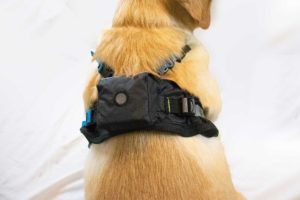It is common to know to be extra careful while our canine friends are under anesthesia, but what about when they are “coming to” afterward? Post-operational monitoring is something that is just as important to ensure a safe recovery. 50-60% of deaths occur within 48 hours post-operation, with most occurring three hours after the operation. This number also depends on the animal’s health status. If an animal is healthy before surgery, it is more likely that they have a safe and uneventful recovery. On the flip side of this, the opposite effect can occur for unhealthy or critically ill patients alike.
What to know before operations:
Age of the animal:
Animals of all ages can need an operation for any reason. Older animals are at a higher risk when they are under anesthesia. This is something to know before putting an animal under.
Obesity:
Does this animal show signs of being overweight? While people love to feed pets, obesity makes operations harder for the animal to complete without complications. Obesity leads to heart conditions that could make a simple operation difficult.
Size and breed:
Smaller dogs are more likely they are to have complications. This is due to the skull size and the anesthetic used. They are also more sensitive to trauma and more likely to seize than larger animals of the same species. Certain breeds can also be more susceptible to issues while in and after an operation. Knowing if the animal you are operating on could have complications is important.
Underlying diseases:
These can be a concern, especially if the owner is unaware. Not completing a physical exam beforehand can make a simple procedure complicated quickly. As a licensed veterinarian, it is important to be over-prepared than under by completing a thorough physical exam prior to operation. It is also important to run blood work so you know what is happening with your patient.

Good News!
There is good news that comes with this, however, and we are thankful for that. These numbers can IMPROVE!! There are many factors that contribute to a safe recovery for our furry friends before, during, and after operations occur. Rebecca Kirby has come up with a list to help decrease the number of post-operative complications.
Kirby’s Rule of 20:
Rebecca Kirby, DVM, DACVIM, DACVECC, is a pioneer in the veterinary medicine world. She saw a need to be more aware when working in the operation room and wrote the “Kirby’s Rule of 20”. This list is meant to serve as a reminder to practicing veterinarians and their staff about the importance of post-operative care. It serves as a checklist to go through as LEAST once a day to help the patient recover. This list is designed so that the staff looks at the basics while covering every detail of the patient. This is to ensure the utmost care is taken in their recovery. While the list is not end-all-be-all, it’s a starting point to help decrease the number of postoperative complications.
Kirby’s List Breakdown:
There are the more common check-offs that are looked at, such as fluid balance and colloidal osmotic pressure, oxygenation, blood pressure and heart rate, rhythm, and contractility. There are also some that are a look into the finer details of the patient, like red blood cell and hemoglobin concentration, the immune status (more specifically the antibiotic dosage), and the drug doses in relation to the animal’s metabolism levels. While these are just some of the things that are on Kirby’s List, they are all of the equal importance when it comes to having a safe and uneventful recovery.
Technology that could help:

Making sure your patient is well cared for is just the start to a happy and healthy furry friend post-operation. There are other factors that occur and blindside the staff of clinics most times. VetMeasure’s MeasureON! is a technology that can also help with the monitoring that occurs before, during and post-operation. MeasureON! is a tool used by veterinary surgeons and clinics throughout the US to better help canine patients recover from all forms of operations. The technology is geared to make the lives of staff easier and help reduce the amount of human error that can happen while monitoring the patient.
To learn more about the MeasureON! Click here!
To read through Kirby’s Rule of 20 Click here!
VetMeasure is not a licensed veterinary practice. Therefore, if you are having any complications with your furry friend, consulting with a licensed veterinarian is advised.

